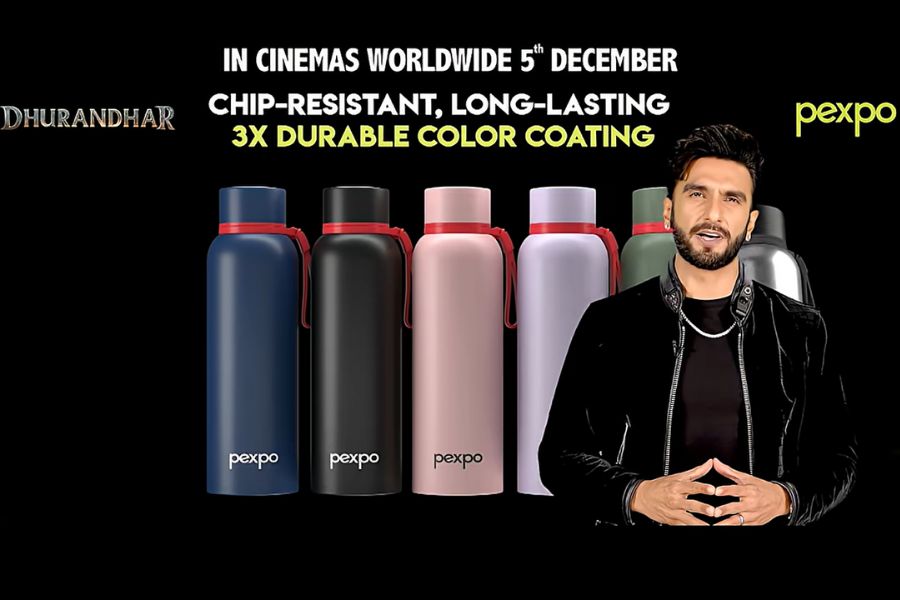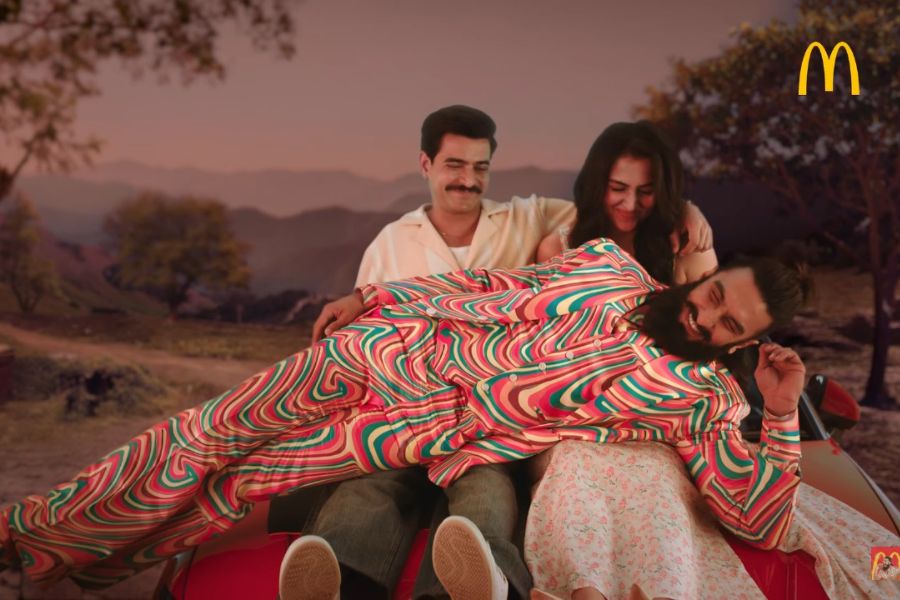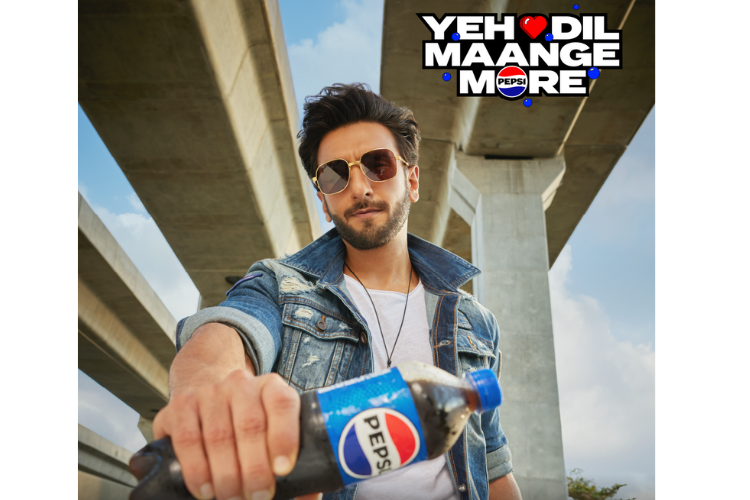How are the products under Rupa positioned, differentiated and who is the target audience for each?
Rupa offers a wide range of products like Euro, Frontline, Bumchums, Torrido, Thermocot, Softline, Air, Hunk, Macroman, Kidline, Femmora, Simoogi, Xing, Stretcho, Expando, Jon and Ribline.
Frontline, Euro, Bumchum, Hunk, Expando and Stretcho are positioned as premium products for the masses. In the mass category as well, there are differentiating factors by which you can target the premium masses or the mid masses, or low masses. These are catering to the men’s categories.
Our brand Jon offers regular products in the same category and is complete mass product.
Then, for women we have Softline and Femmora. Softline is for the premium masses while Femmora is a step ahead and is in the high-end premium category.
In winter wear we have Torrido and Thermocot. This is for the full family as we have a kids range, youth range and a range for the older consumers. We cater to both men and women here. Thermocot is a complete premium mass brand, while Torrido is the premium product.
Price differences between premium and premium masses vary from range to range.
Who does Rupa consider competition considering the brand is present across categories?
I cannot reveal the exact market share, but we are one of the leading companies in the categories we are present in.
Has the mass appeal of Rupa affected its acceptance in the premium end?
Rupa has all the ranges. It’s not only mass, also mass-premium and super-premium. Now, we have all the products at our end. We are also doing as per the requirement of the market, the marketing for different segments. We are utilising all marketing platforms to communicate this.
We don’t think the mass appeal has affected the brand in the premium markets.
You're present across men, women and children's products. Does the men's category still get you the highest sales? Is this changing?
Yes, it still does. All the categories are important for us though.
Kids are getting brand conscious too. So, our kids range helps us. We have a brand called Frontline Kids, which is specially targeted at the kids. We’re giving the same products for the main Frontline category, with the difference only being the size. We have family ranges for our thermals.
As far as women are concerned, they are also getting very good disposable income. The metro-centric women are having aspirations of getting more and more famous, confident etc. That’s why we also have the premium women range like Femmora. We just launched Softline women for which we had Bipasha Basu as brand ambassador.
We are also expanding our area from men to women and children. We are trying to give equal focus to all. But, as we currently have many men’s brands, the focus is more on this category.
As of now the pecking order is men’s, women’s and then children. But the demand is in the market for women and children too, so we’re moving towards that.
Is there a trend of premiumisation in the innerwear category? If yes, will that benefit international brands?
Yes, definitely (there is a trend of premiumisation). As far as premiumisation is concerned, it depends on the TG. Taking the automobile market as an example – there are cars available for Rs 2 crore as well as Rs 4 lakh. Everywhere there’s a TG. So as far as premiumisation is concerned, we are in a good place.
The company has been here for decades and we are present in India and abroad. Day by day we are upgrading our products and are also present in the premium category. As far as India is concerned, there are still many non-branded products in the market.
There were reports in 2011, when excise rates were increased that garment makers were resorting to selling unbranded apparel. Is this still a market for unbranded players?
At present it isn’t. But, a few years ago this was the case. In the last four to five years it has changed. Nowadays, everywhere one goes there is media available. Due to media, branding and positioning, we are seeing a trend of premiumisation. That’s why the youth – wherever they’re residing – are getting aspirational and confident. That’s why the branded products are actually getting a very good leverage.
Other than the move towards branded garments, how has the innerwear market evolved?
The basic key has been media and its penetration. Earlier, in many suburban towns or rural areas, there was no structured outdoor. But, nowadays even highways have structured outdoor. Many newspapers are circulated across India even in smaller towns and villages. Many of these areas have FM, satellite television and internet connection over mobile. Media has helped a lot to make brand positioning, not only in our category, but across categories. The innerwear market is just one of the markets that have evolved with the reach of media growing. People are looking to consume branded goods now.
In how many markets globally does Rupa function?
Other than India we are also present in GCC, Africa and Asia Pacific.
Your website mentions that Rupa 'pioneered the printing of the brand name in front of the vest and that this made the logo a design element to be flaunted'. Was this the first brand to do that and how did this decision come about? What impact has that had?
As far as branded vests are concerned, I believe we are the first brand to do so. When you have a brand and you focus it in a subtle manner, the core consumer will definitely like it. In the early stages there were many car companies that used to write complete names. Then after that they focused only on logos. That’s what people liked more than mentioning the complete name.
Every good move will give you a good impact and this move was no different. It has helped us for sure.
The brand has shifted brand ambassadors through associations with different Bollywood actors. The last campaign for Rupa had Ranveer Singh as brand ambassador. What's the reason for this and does shifting of brand ambassadors help?
We’ve had Govinda, Sanjay Dutt, Hrithik Roshan and others. Our brand ambassadors have shifted with time. A brand ambassador’s role is to sync with the brand so that it can be well understood by the TG. Earlier, when Govinda’s era was there we had him. Now, the youth as far as our Frontline TG is concerned, they have the same features like Ranveer Singh. They’re basically aspiring, talented, sexy, fun loving, cool, reliable and hard-working. Now, we see many commons between the brand and Singh.
Shifting isn’t the word here in this context. It’s just moving with the times and connecting with the TGs. That is why this is the current trend. This is not only with Rupa, it’s something across the world.
How are advertising and marketing budgets changing for Rupa? Has the brand slowed down with advertising campaigns?
Advertising spends depend as per the launch of the products and varies with strategies. If we have taken on board a celebrity as brand ambassador, we’ll be pumping in more money at that time for communication. So, our budgets are somewhat like our appetite. I can’t tell how much I’ll eat today versus tomorrow, and it could vary.
There are many advertisements that are seen, and there are many other marketing efforts that are not seen. We’ve not slowed down. The TG has shifted and when we can’t see the initiatives, we feel it’s slowed down. But, I would like to say that this (advertising) is now more than what we have done in the past.
Some of your products have an online store and some are said to be under construction. We tried searching for the products on other e-commerce portals like Jabong and Myntra - and were unable to find them. What's the reason for this?
We are in the process of getting our products available online. We have our own online store, and we plan to add all our products there. We’ll be rolling out some digital initiatives too. Our Frontline ad is the first ad that has gathered more than 7,80,000 views, and that’s more than our competitors views by about 500 times. This is the most viewed TVC in our category across India.
(This article first appeared in the 2 October 2015 issue of Campaign India)




